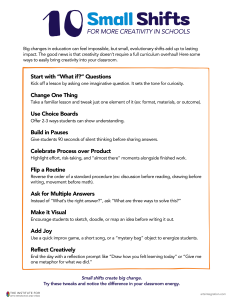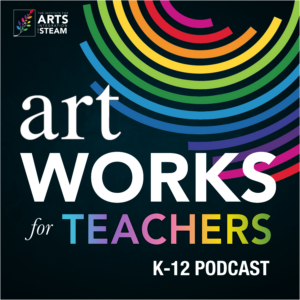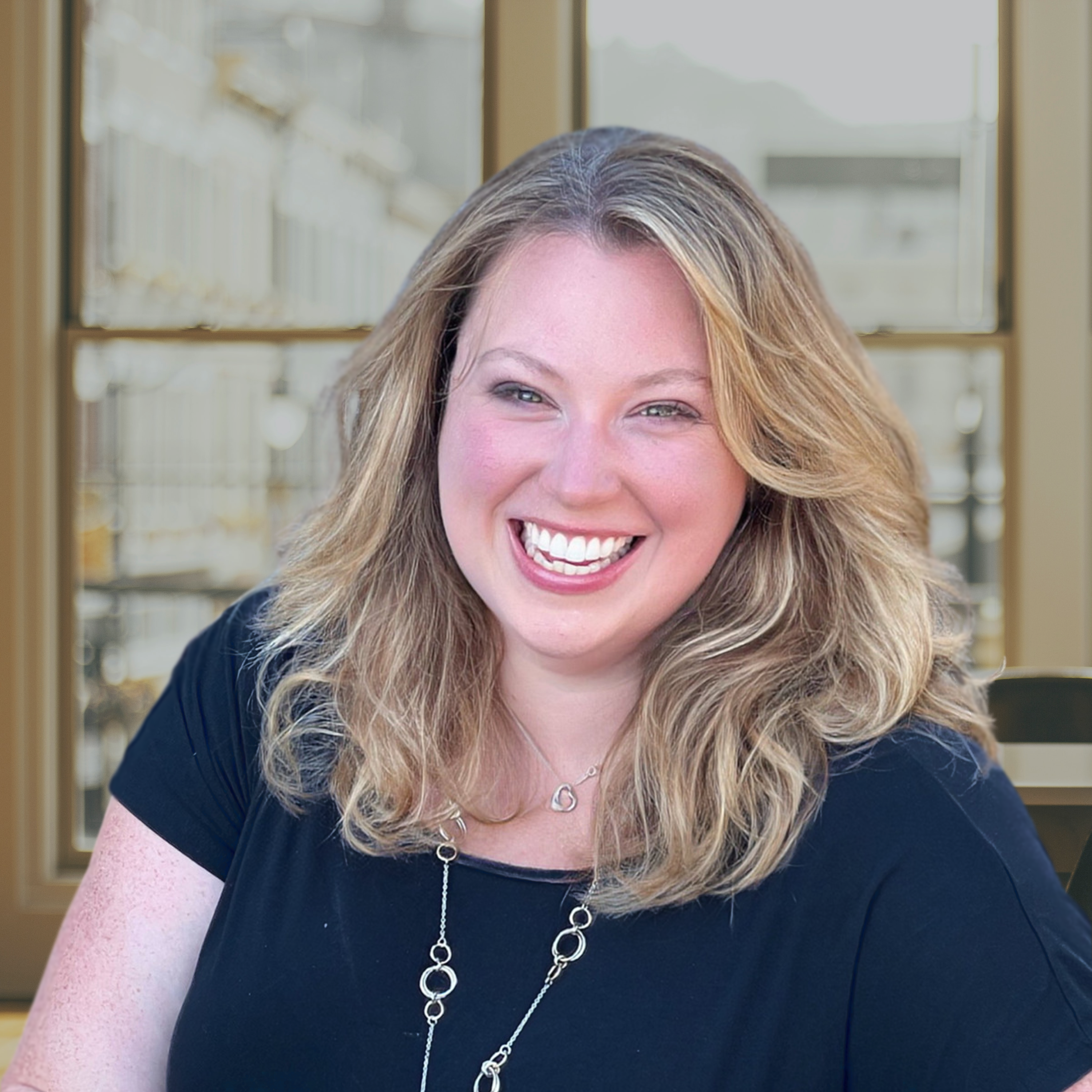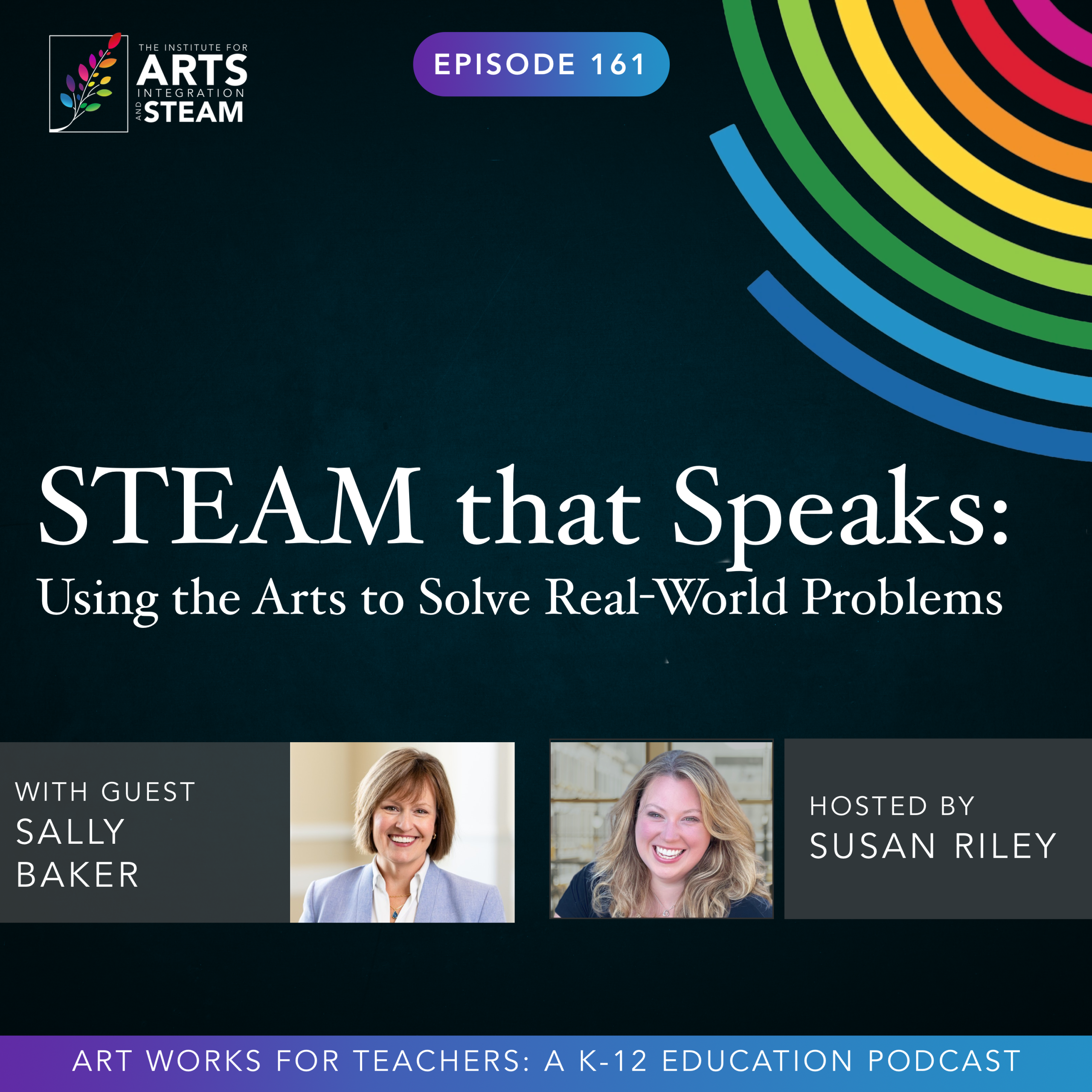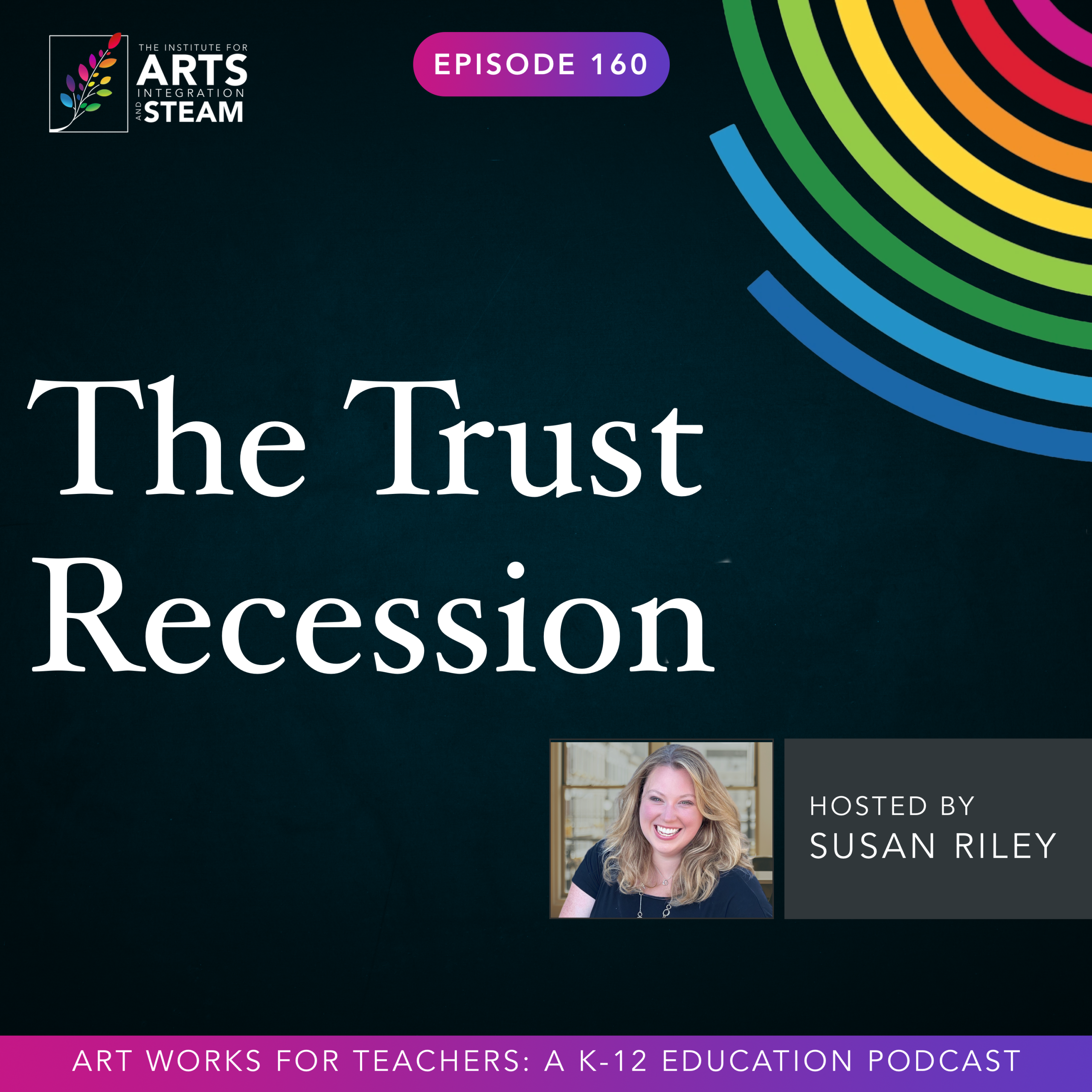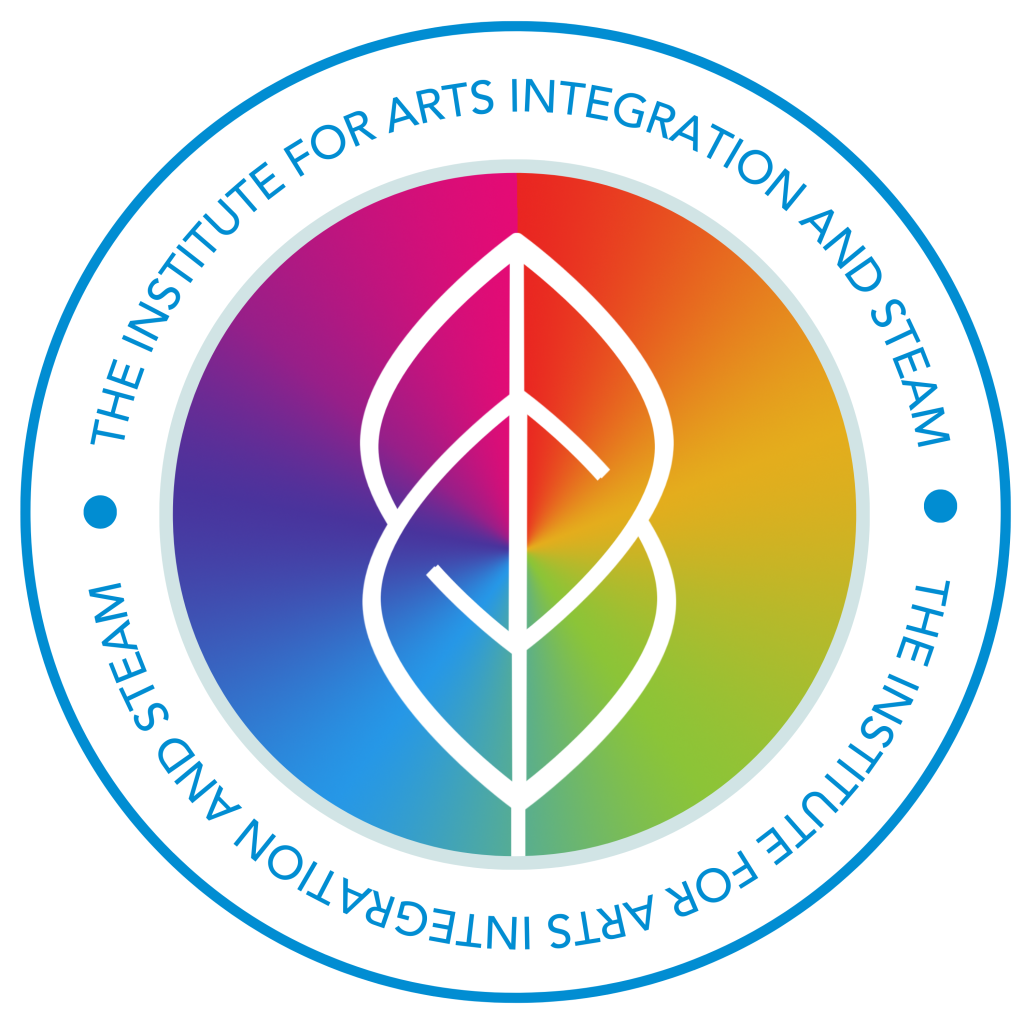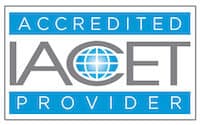ART WORKS FOR TEACHERS PODCAST | EPISODE 151 | 31:46 MIN
Evolution or Revolution? A New Path for Creativity in Schools
Big changes in education often fail because they come in like a revolution… loud, disruptive, and exhausting. Cyndi Burnett invites us to think differently: what if the secret to lasting creativity in schools is small, evolutionary shifts that actually stick?
Enjoy this free download of the 10 Small Shifts Resource.
Susan
All right, well, welcome, Cyndi. I'm so glad you could be here today.
Cyndi
Thank you so much for having me, Susan.
Susan
Absolutely. So let's start out with the thing that I always ask so that we can kind of frame our conversation today. Can you let us know a little bit about who you are and what led you to focus your career on creativity and education?
Cyndi
I'd love to talk about that. So my name is Cyndi Burnett and I started out in my young my young career life as a professional musical theater actress and I went to school for musical theater loved the performing arts and went on a national Broadway tour and I came off the tour and I said I don't think I want to perform anymore but I didn't know what I wanted to do so I went out to lunch with a former mentor of mine a wonderful teacher named Karen, and she said to me, what do you want to learn about? And without hesitation, I said, I want to learn about creativity. And this was back in 1999, so 26 years ago now. And I said, I wonder if I can study that at the master's level. And so through a series of serendipitous events, I found the oldest degree granting program in creativity in the world was actually in my backyard in Buffalo, New York, because I am from Buffalo, New York. And I found this degree in creativity in my backyard. So all of a sudden I'm sitting in a class. So I say I want to study creativity in 24 hours, I'm sitting in my first class and I'm sitting there and they're talking about this cognitive rational scientific perspective of creativity. And I'm like, okay, so when are we getting to the arts part? When are we getting to the creative process and blocks and barriers to our creativity? I had just finished reading Julia Cameron's book, The Artist's Way, and that was 26 years ago, which had a huge influence on me at that point in time. And that's why I wanted to study creativity. So this scientific approach was completely foreign to me. And a friend of mine who was sitting next to me, I said, I don't understand. So when do we get to create stuff? They said, this is a science of creativity. And I'm like, okay, what's that? What did I sign myself up for? And at first I was really uncomfortable. I won't lie. It was like, this is not who I am. Everything I do is intuitive. It's a natural part of who I am. I love to create things. But I did fall in love with the scientific perspective of creativity. And I came on as a graduate assistant and as a teaching assistant. And I really found that I had, it was easy for me to teach creativity. It came very naturally to me. I fell in love with it. I loved working with undergraduate students and most of the students at Buffalo State are students from the Bronx and Harlem and come from really diverse neighborhoods. And I really enjoyed working with this particular population. And so they brought me on to start teaching creativity as an adjunct. as many, if you've ever adjunct before, you'll know that they pay very little. So they also said, so I also had to work as a choreographer in the evening. in the daytime, I was this scientific creativity teacher, a professor, and then at night, I was choreographing shows and it was almost like I was living two different creative lives. And I decided that there had to be some sort of connection. We're all saying this word creativity. What is that connection between the science and cognition and this artistic, more intuitive emotional side? So I have spent the last 25 years of my career looking for that bridge. And the bridge that I found came through the work of E. Paul Torrance who was known as the father of creativity and education and the skills that he used called the Beyonder skills. So this is a long way of me saying, that's me, Cindy Burnett. That's an intro, how about that? I'll stop there.
Susan
Okay, so I've got a couple of questions. First, I'm really curious, what was the Broadway show that you were in?
Cyndi
It was A Funny Thing Happened on the Way to the Forum with Rip Taylor.
Susan
Absolutely fabulous. Love that. And then I think Julia Cameron is like her artist's way book must be the thing that everybody in our generation right now studied back in the late 90s. I think I just everybody that I've ever talked to on this show, including myself at that period of time, that was just that was the book that just you clung to. And I still think it's so relevant today, I also think there's just, there's so many other things that we now know, which can help us bridge that gap, right? And so I wanna kind of talk about this bridge that you kind of discovered. You've talked about your approach in terms of creativity and education being evolutionary, not revolutionary. Let's start there. So what does that mean and what does it look like in practice?
Cyndi
So when I went out to do my doctoral work at the University of Toronto, I was looking at holistic and aesthetic education. And that's really where I got into my education work, is finding that bridge. And one of the things I found when I started working with educators is they would come to me and they would say, all right, Cindy, I am ready. I'm gonna take everything out that I'm already doing. I'm ready to do whatever you tell me to do. And I'm like, no, you don't need to do that. You don't need to overhaul everything you're already doing. In fact, you're probably already doing so much in your classroom that you don't even realize is creative. And so that was the evolutionary approach. And I wrote about that because I was doing a lot of work on this evolutionary approach to creativity that we need an evolution because we haven't caught up to 2025 when we look inside the classrooms. Now, I will say, Susan, this has changed most recently. We've been having a lot of conversations on my podcast with that I co-host with Matthew Warwood, the Feeling Creative in Education podcast. We've been having a lot of conversations about do we really need a revolution now? Because now with the onset of AI and everything that's happening in the world, maybe it really is time for a revolution because I just don't know if evolution is enough. Now I go back and forth on this, but that's what I mean by revolutionary versus evolutionary small changes making a big comeback.
Susan
Yeah, and I still think, I think as a base layer probably, like that's where we are, right? And I always encourage people to start small, especially with things like arts integration or STEAM as their methodology, know, start small, little small changes, strategies, things that you can implement, you know, slowly. But I also think perhaps maybe with the revolutionary aspect is the intention with which you are embedding your creativity. And so I would love to know like, in terms of your background, which is fascinating with all of these elements of theater and education and creativity research and all of these components, how do those pieces come together then in your work and how you specifically approach creativity with teachers?
Cynd
So I mentioned that those 20 skills, the Beyonder skills, and I've been working with this creativity skill set for, let's see, 15 years now. And it has developed, so it has changed over time. I've added skills based on the current literature and research. So mindfulness, curiosity, embracing ambiguity, risk taking, those skills have been added to the skill set.
And what I do is something called weaving creativity. So one of the first books I wrote was weaving creativity into every strand of your curriculum. And I started going out to conferences and schools and working with teachers on, let's take one creativity skill. And that skill might be embracing ambiguity. So how do we get students to embrace ambiguity? How can you build that into a lesson on the microscope?
So we're gonna teach students about microscope, how can we build in embracing ambiguity? So now let's take a look at, we're gonna do, we're gonna still do that same lesson on the telescope. And this time, telescope, microscope, I think I said, microscope. We're gonna look at this microscope. And this time we're going to practice producing and considering many alternatives. So what would it look like if we taught it through the lens of that creativity skill?
So using these 20 creativity skills, we can start to look at how we might teach our lessons by infusing these creative thinking skills into it. So that's what I've been working with teachers on. And the first book, the weaving book, actually came out from working with hundreds of educators and teaching them how to integrate these skills in and what they might look like in different subjects from physical education to science to mathematics in high school to working with little ones. And that's what that book is all about, is bringing these creative thinking skills in.
Susan
It reminds me of when you go to the eye doctor and they put the different lenses in front of you and they say, which is better, A or B? And how you see things in different ways and different ideas. And I think that's such an easy, simple way, deceptively simple, right? But a simple way that you can start this process of bringing creativity in no matter what you teach.
And so I love that. I think that is something when you talk about evolutionary, you know, bringing that into your teaching, think that's such a wonderful model right there. I was researching for this episode, I found your five star model. How does that work and how does that relate to what you just shared?
Cyndi
So that's really interesting. That came after the weaving section of my, I'll call that the weaving section of my life, where I spent about 10 years working on that project. And then I started, when I was approached by schools, they would say, we wanna bring you in for a year long professional development, and we really wanna bring creativity into the whole school system. So what does that look like? And that was a much bigger question. That was more than just how do I bring creativity into my lesson on this particular book. It was how do I bring creativity to the whole school system? So that STAR model came from a case study I did with a school where it's like, okay, day one, what's the most important thing I need to cover on day one? What is creativity? What does it look like in your classroom? And why is it important? Because if you don't get that buy-in, it's not gonna happen. If teachers just think this is another thing that I have to do, they're not going to join in with you, they're not going to listen to you.
The second part is modeling creativity as an educator. So how do you model creative behaviors like openness and curiosity and risk taking? And as students start out this new, or teachers start out this new school year, really to model that to their students that this is an open space. And that leads us to point three, which is all around supporting an environment for creativity. So giving space for new ideas and teaching students about keeping open.
And one of the things that we talk a lot about on our podcast is not question shaming. So sometimes you have that student, we've all had that student, let's call that student Judy. Judy just raises her hand and has questions for everything. And we love Judy's questions, we do. And sometimes they're just not appropriate. Well, how can we still take those questions and honor them? So, you know, even just having a parking lot on your door with a flip chart and say, hey, Judy, thanks for that question. Why don't you capture that and we'll cover it later on? Or maybe someone else will be able to capture it later on.
Doing things like that support the environment for creativity. The fourth piece is the infusing, integrating, weaving creativity piece. So how do we embed it into education? And the fifth piece is around deliberately bringing in creativity programs into the school, like STEAM programs and design thinking programs, creative problem solving programs, so that students can have that experience with a deliberate creative process.
Susan
I like this. is like a, this is like the zoom out from the zoom in that we started in. So when we zoom out and we have these, these five areas, that focus for, for creativity at a larger level, maybe a district or a school level, how long does that typically take? What does that look like in terms of rolling it out for a school or a district? And then, in addition to that, what are some maybe roadblocks that you run into?
Cyndi
I think in terms of rolling it out, it's probably a year long to do all of it because it takes deliberate time and practice to go through each one. I'm working with a school district in the fall and each month we're working on one specific point of the star and they will practice it and they will use it and we will have discussions around it and things like that. I think the biggest barrier I get is probably from more seasoned educators who have been around for a long time and they're not as excited about any sort of changes because you you've been doing something for a long time and someone comes in and says okay now we're gonna talk about how we're going to build in you know being aware of emotions and breaking boundaries and and they go wait a second but what I've been doing has been working just fine it's like okay well how about we try something new just you know you want your students to try something new and it's good for you to try new things so why don't we start there and
And so that's typically the biggest barrier I get also around assessment. That's a big question that I often get working with educators is, so how do I assess if this is actually working?
Susan
Hmm, so let's dive into that. And I'm just kind of pivoting here away a little bit from our originating questions. We'll get back to them, but I'm just so interested in this process. think it's, think when educators are often excited about bringing creativity into their own classrooms, but then they struggle because they want others to join them in it and they wanna link arms and they sometimes get to these barriers where somebody else doesn't want to do it because they've been doing something the same way for the last 30 years or an administrator kind of puts up some roadblocks. So when we look at a school or a district model, I'm always fascinated by these elements. And I think you're right, assessment is sometimes a big barrier for teachers because it is so prevalent in our culture of education right now. How do you advise looking at assessments when it comes to creativity?
Cyndi
I think it really starts at the policy level, and it's interesting because I'm literally working on a chapter around this, but looking, you know, having these conversations at the policy level in terms of the expectations of what we want, and then as it trickles down into boards and looking at the communities and what community members want for their school districts, and the administrators, you just mentioned the administrators. I worked with a wonderful administrator here in Buffalo, and she got up in front of her school and she said, what Cindy's talking about is important. I want to see new things happening in your classrooms. So if I come in to observe you, I want to see you trying something new. I would rather you see you make a mistake than, you know, to do the same thing that you did for me last year. And I think that is extremely helpful and beneficial to have that support as we look at the, you know, the different layers of ecosystem of education. Now in terms of assessment, there's different ways that you can assess students and even looking at students. I like self-assessments and I know that they can be, you know, obviously they're subjective. However, I do think that there is value. If I have students in the beginning of the semester or the beginning of the year and they're saying I'm not creative or I'm on a scale of 1 to 10 I'm at a 5 and at the end they're saying I'm a 10 they're getting something because there's even research that shows awareness of creativity shows that you are a better a more creative person just by saying I am creative so even getting students in that place or getting students to start listening to each other's ideas I just worked with a group at Fresno University of a group of undergraduate students and they spent pretty much the summer with me once a week. And at the end, they were all saying, this is not only applied to the work that I'm doing, the research I'm doing, but it's also applied to my real life. And they were citing some really rich examples of how they were really listening and understanding new ideas. if a perspective came at them and it was different than what they were used to, that they wouldn't just judge it, that they were, what I really tried to get them to do is think more openly. So it might not show up in numbers but it shows up in words and behaviors and that's what we can look for.
Susan
I think that's a profound statement that you just made. The idea that it doesn't show up in numbers, but it can show up in other ways of behaviors and actions that students take. I often think about various students in schools that I've worked with and why some students in schools seem to have the approach of open dialogue and creative thinking and critical thinking down a little bit more than maybe some other schools that I've been in. And I think this is really where it's at, is the normalization of taking risks, being willing to open up for that creative experience, right? And holding space for ambiguity and not knowing the answers, which makes me consider in terms of looking at people and how we look at creativity. Lots of times there's this myth that you have to be artsy to be creative, right? That creativity somehow lives only in our music, theater, dance, or visual arts classrooms and doesn't transcend to daily life, which I always think is funny. But you also talk a lot about creative accessibility. And so what does inclusive, everyday approach to creative thinking look like in a typical classroom for you?
Cyndi
That's a great question. So I think creativity for me, it looks like openness, curiosity, risk-taking, embracing challenges. And when I talked about the language between the bridge, I'll tell you, when I started out in the field, and the reason why I was looking for that bridge was because I would go to my friends who were artists, and I had a lot of artist friends, obviously, that were performing arts and visual arts, and I would say, there's this scientific approach to creativity, and there's these tools and techniques. They'd go, no, it's not what we do, not what we do. And I'm like, hmm. So then I would go over to my scientific friends and I would say, you know, there is like layers of emotions and the intuitive process and they're like, no, too fluffy, too fluffy. So I was like, I'm like, I see, I see the connection. So where are the connections? And that connection for me was in that list of the 20 skills, because, you know, when we talk about creativity, it's not just about one thing. So in the same way, if I wanted to become an Olympic swimmer and I want terrible swimmer, but if I wanted to become a little Olympic swimmer, it wouldn't just be I'm going to learn how to swim. It's I'm learning how to kick my legs hard. I'm learning how to hold my breath. I'm learning how to dive. I'm learning how to do breaststroke. And the same is true with creativity. It's not just about one thing. It's about all of these different skills that make us a creative person. And your creative person looks different than mine because maybe I'm a little bit more playful than you are, but maybe you're really good at solving problems and clarifying problems. And what's beautiful about creativity is we can all be very different in not only the way we express our creativity, but in the way we think about the world. And that is what makes creativity, in my opinion, accessible, is that there's really no wrong way unless there is one wrong way. And that's to use creativity for harmful reasons. And so when I go into schools, that's one of the first things I talk about. Creativity is a generation of novel.
and useful and appropriate ideas because we want our students to create for the benefit of themselves or the world or for others but we don't want it to ever do harm.
Susan
Yes, yes, absolutely. As you've been talking about this idea of making creativity accessible and openness and all of the 20 points from Torrance, I was struck by the idea of doing creativity versus being creative. especially right now, and we're filming this during back to school season, I see a lot of classrooms that are like classroom decor, right? The bright and shiny like rainbows everywhere, like the stimulus is all over the place. it's welcome to my creative classroom. Like this is super creativity on steroids, right? And I keep thinking this is like doing creativity. We're doing things in order to be creative.
But I feel like you're saying that there is a difference and there is a stark contrast between doing creativity and being creative. Am I right on that?
Cyndi
I would say there's definitely a difference. And there's nothing wrong with either one, in my opinion. I think being creative is inhabiting those skills that will show to your students that it's okay to share new ideas, that it's okay to take risks in your classrooms, that sometimes learning is hard and challenging and that's okay, and that…
You know, I think that's a wonderful thing to be creative and then doing creative things, you know, when you look at, you know project-based learning or you look at giving students challenges or allowing them choice and agency and designing their own learning or actually creating things. There's beauty in that as well. I'd love to tell the story of my favorite, my most creative educational experience came from a high school English teacher and he gave us the choice to decide how we wanted to present what we learned. And I remember I was in love with like Calvin and Hobbes when I was in high school and I did, I read a book, Catcher in the Rye and I did a whole Calvin and Hobbes cartoon around the Catcher the Rye and I still have that. It says A++ Stupendous. And I wasn't an A++ student. I was a solid B. And so having that A++, it really came from this ability to create something. So there is such benefit in being able to create. So the doing and the being, I would say, are equally important.
Susan
I think that's so helpful. Now you've co-hosted the Fueling Creativity podcast and collaborated with Creative Minds from literally everywhere. What, I'm curious, what's one big shift or idea that's really stuck with you after some of those episodes?
Cyndi
So I co-host the podcast, as I mentioned, with Dr. Matthew Warwood, who's a professor at the University of Connecticut. And what's amazing is every time we have an interview, we get off and then we debrief on an app called Marco Polo Together. We sort of talk through our insights from what we've learned. And I think the biggest thing that we have both learned is the fact that the creative process can be fun. I have always looked at it as fun. And that's the reason why I started in the creativity field is to make learning more fun because I have two teenagers, they started school yesterday, I said, how was your day? Most of it was sitting in rows and listening and it's like, we are in 2025. There is so much more potential for making learning more fun and engaging. And I think creativity has the potential to really build the resilience that our kids need. I think more now than ever before, probably even more than in our generation. But really building that resilience of this is hard. This challenge, this thing I'm creating, it's, it's makes me feel uncomfortable. I don't like it. And as teachers, what do we want? As teachers and parents, we want to run to our children, our students, and we want to make everything better. We want to make it easier.
That's not what's going to ultimately benefit them. So while it is super challenging to do this, and I've spent time in classrooms where, like I see the students grappling, I'm like, I want to give them the answer, but you can't, right? You can't give them the answer because they have to figure it out themselves. And once they do, they are going to feel empowered and it's going to build their creative confidence. And what else do we want from our students than this creative confidence where they can tackle the challenges that come their way. So I think the biggest thing I've learned, Susan, is to step out of the way and allow them that discomfort and that ambiguity until, unless I feel like it's gone, there's a fine line, because I want them to be uncomfortable, but I don't want them to like spiral, right? I don't want them to go home and cry or, you know, I don't want those sorts of things. But the discomfort and the ambiguity is okay. And I have learned that I need to be okay with that myself, even when it doesn't feel good.
Susan
Yeah, it reminds me of Richard Deese's phrase, hard fun. That this is, it's the balance right in there of being hard and being fun is where you need to be. And I so sympathize with it as a parent who's watching my child write college essays, who's sitting there going, this is so hard, I don't know what to write, I don't get it. it's, and I am right in that spot. So I appreciate that. That's so insightful. I know you're also in the middle of writing a new book, The Future Creative, with your collaborative partner. Tell us a little bit more about it.
Cyndi
So we have at this point done 130 interviews with the leading creativity scholars, creativity practitioners, and educators. And most of the educators we've actually worked with are mentored. And we've done all of these interviews. And at the end of every episode, we've asked them for three tips they would use to bring creativity into the classroom. So we've really tried to make it practical for teachers. Even when we've gotten into the neuroscience of creativity, have the, you know, one of the leading neuroscientists in creativity talking about here's three practical tips because we really wanted to make it accessible to all educators. So we've taken all of those tips and we've compiled a book of the 10 actions for the future creative. So that book will be coming out in 2026 and really excited about it.
Susan
I'm thrilled for that. I think that's going to be so beneficial for so many people. Educators, yes, but so many of us who are looking for creativity in everyday spaces, in everyday ways that we can change because as you know, I believe that creativity is really going to be the thing that sets humanity apart, especially in the future. So I cannot wait to read it. How can our audience stay connected? Make sure that they know when that book is available and learn more about working with you and your team.
Cyndi
So they can certainly go to my website, creativityandeducation.com. The podcast is fuelingcreativitypodcast.com and we actually have collections based on different demographics. So if you're interested in the science of creativity or the arts of creativity, we have a STEAM section that you could just listen to a specific collection. And I am very active on LinkedIn. So feel free to connect with me and say, hi, I listened to your podcast with Susan and I'd love to connect and I'd love to connect and hear more about the work that you're doing.
Susan
Fantastic. Well, Cindy, thank you so much for your time today and for sharing your genius with us. It has been a true pleasure of learning right alongside of you.
Cyndi
Thanks so much for having me.

